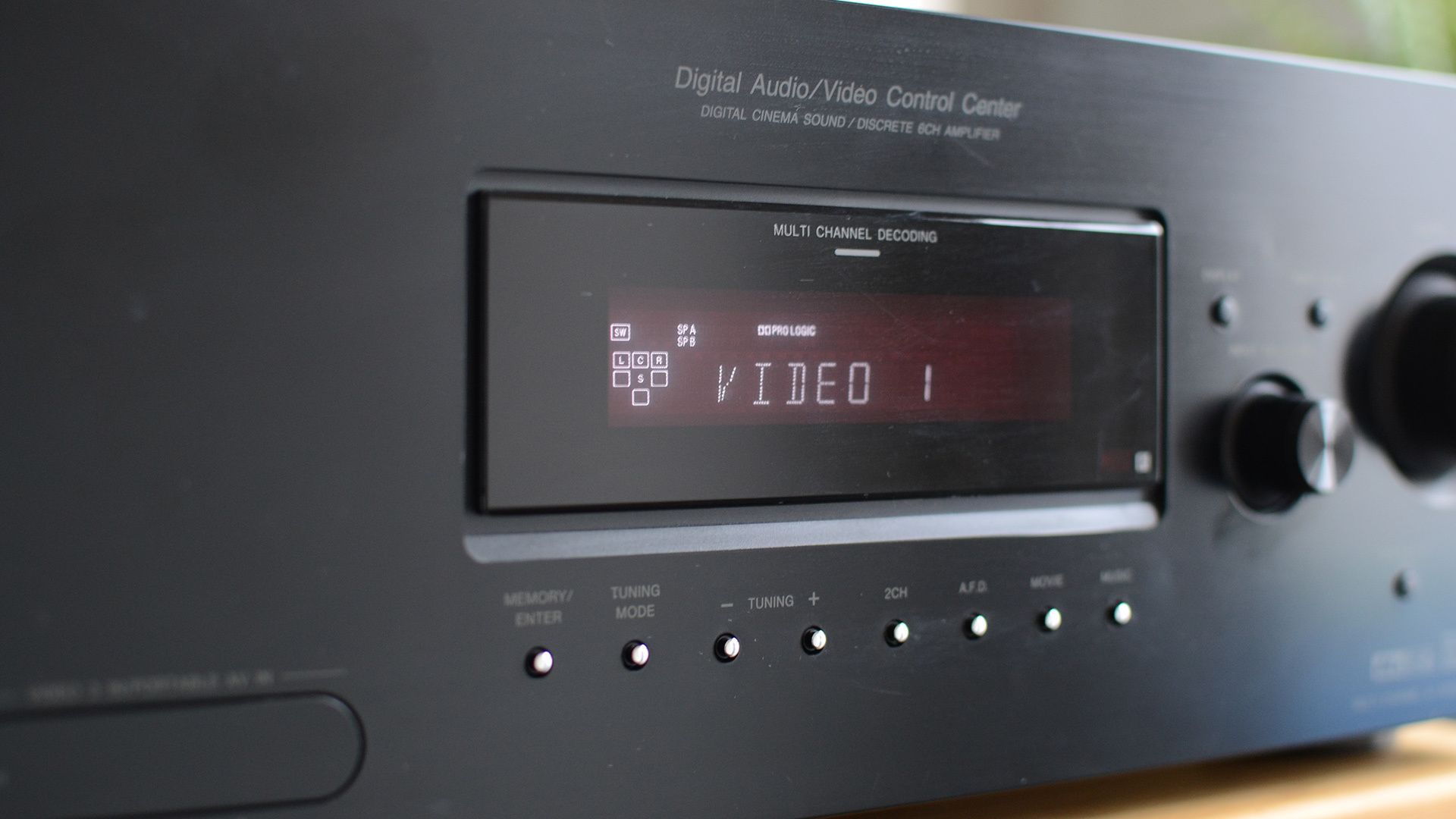
Explore Elite Audio Quality with Our Pick of Leading Stereo Receivers Homes

Explore Elite Audio Quality with Our Pick of Leading Stereo Receivers Homes
Read update
- We’ve reviewed our recommendations and have updated our picks for the best budget and best vintage stereo receivers.
These days, receivers often focus on offering tons of surround channels instead of fantastic stereo sound. There are still some great stereo receivers for music, regardless of what your budget may be.
UPDATE: 09/07/2023
We’ve reviewed our recommendations and have updated our picks for the best budget and best vintage stereo receivers.
Sony STR-DH190
Best Stereo Receiver Overall
See at Amazon
Pyle PT390BTU Stereo Receiver
Best Budget Stereo Receiver
$128 at Amazon
Yamaha R-S202BL
Best Bluetooth Receiver
See at Amazon
Pyle PVTA90 Stereo Receiver
Best Vintage Stereo Receiver
$206 at Amazon
Onkyo TX-8220
Best Stereo Receiver for Vinyls
See at Amazon
Cambridge Audio AXA35
Best Low Profile Stereo Receiver
See at Amazon
What to Look For in a Stereo Receiver in 2023
One of the first things you’ll need to consider when shopping for a stereo receiver is the wattage. Assuming you’ve already got a set of speakers, you need to make sure your receiver is capable of driving them properly , or you might end up blowing the speakers out. If you’re shopping for both speakers and a receiver at the same time, keep this in mind when choosing each.
Next up is how you’ll be connecting everything. This doesn’t just mean matching the type of cables and connectors between your receiver and speakers . You also have to keep in mind what playback devices you’ll be connecting and how you’ll be using them.
One area that is especially important to consider is whether you’re hooking up a turntable . These typically have lower output than most other devices like CD players or Blu-ray players, and they often need either a receiver with a phono input or a preamp to bring up the volume.
Wireless connectivity is another significant point to consider. This includes Bluetooth , which is handy if you want to listen to music from your phone. It’s not just Bluetooth, though, as some receivers support Wi-Fi or Ethernet, letting you stream directly from Spotify and others.
Some stereo receivers also support multiroom or whole-home audio . Most often in stereo receivers, this will be in the form of A and B speaker outputs, which let you connect two sets of speakers to a single receiver. Some higher-end models also feature wireless multiroom audio.
Something else that may be important to you is the overall profile of the receiver. If you’re placing the receiver on an open desktop or shelf, this won’t matter. That said, if you’re placing the receiver in a home theater cabinet or similar enclosure, you may want to opt for a low-profile model for a better fit.
Finally, not everyone needs a receiver in the traditional sense, meaning it has a radio built-in. A few of our picks are technically integrated amplifiers , as they don’t feature a radio.
| How Did We Research | ||
|---|---|---|
| Models Evaluated | Hours Researched | Reviews Analyzed |
| 16 | 4.5 | 22 |
How-To Geek’s product recommendations come from the same team of experts that have helped people fix their gadgets over one billion times. We only recommend the best products based on our research and expertise. We never accept payment to endorse or review a product. Read More »
Best Stereo Receiver Overall: Sony STR-DH190
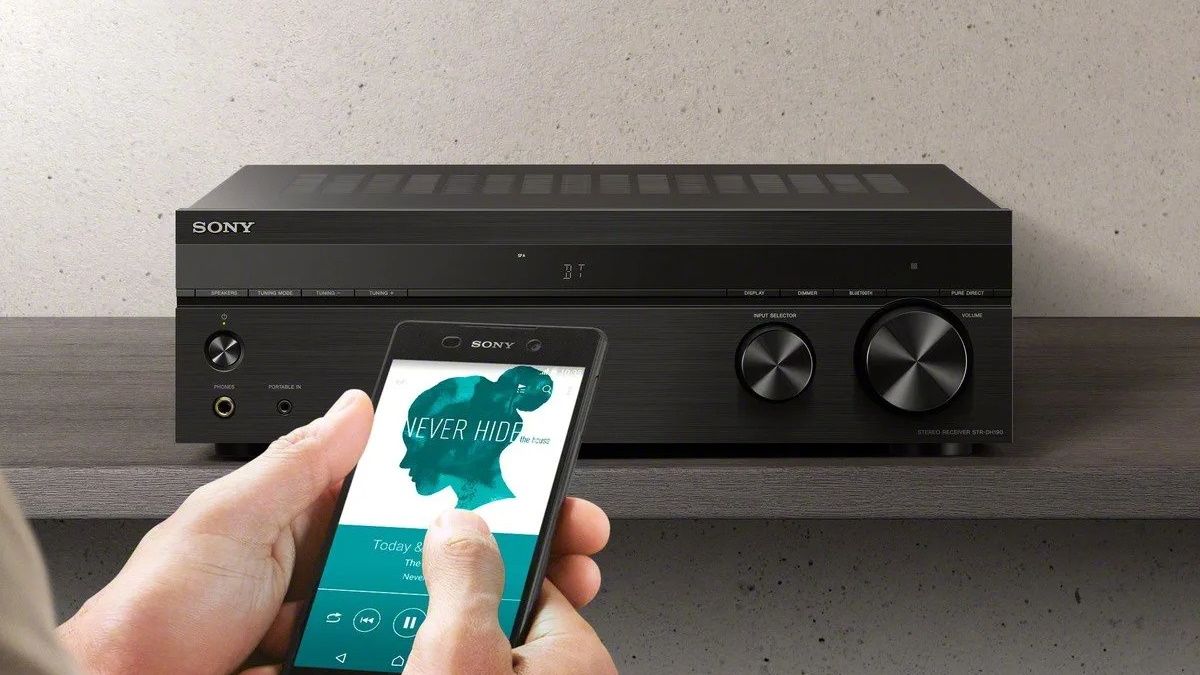
Sony
| Pros | Cons |
|---|---|
| Phono input for connecting a turntable | No wired digital inputs |
| Bluetooth support | No dedicated subwoofer output |
| Output for subwoofer or attaching a recorder | |
| Sound-matched to Sony’s PS-HX500 and PS-LX310BT turntables | |
| A/B speakers for wired multiroom connections |
If you’re looking for a stereo receiver, you’re likely looking for something with plenty of connectivity options and flexibility but don’t want to spend too much. The Sony STR-DH190 fills that role perfectly, with support for all sorts of playback and 100 Watts of solid, powerful sound. It’s not cheap, but it’s also far more affordable than many receivers.
The STR-DH190 features four inputs, one of which is a phono input, letting you plug in your turntable if you own one. There is also a line output, which you can use for a subwoofer with a suitable crossover . You can also use this for hooking up a digital audio recorder or even a cassette deck.
It doesn’t stop at wired connections. The STR-DH190 also features support for Bluetooth, letting you play music wirelessly from your phone or tablet. Even better, the receiver supports Bluetooth Standby, which automatically powers on the receiver when you start streaming music.
The STR-DH190 also supports separate A and B speaker outputs. This means if you want to hook up a second set of speakers in a separate room for wired multiroom audio , you don’t need another receiver.
At around five inches tall and 17 inches wide, this isn’t the slimmest receiver by a long shot, nor is it the lightest at around 15 pounds. That said, it shouldn’t have trouble fitting in most entertainment centers.
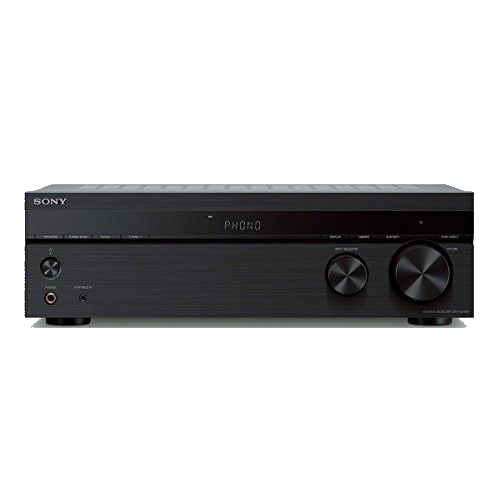

Best Stereo Receiver Overall
Sony STR-DH190
The Sony STR-DH190 isn’t perfect, but it’s got all the features you’ll need for listening to music on a great set of speakers, including Bluetooth and a phono input for plugging in your turntable.
See at Amazon See at Bestbuy See at Target
Best Budget Stereo Receiver: Pyle PT390BTU Stereo Receiver
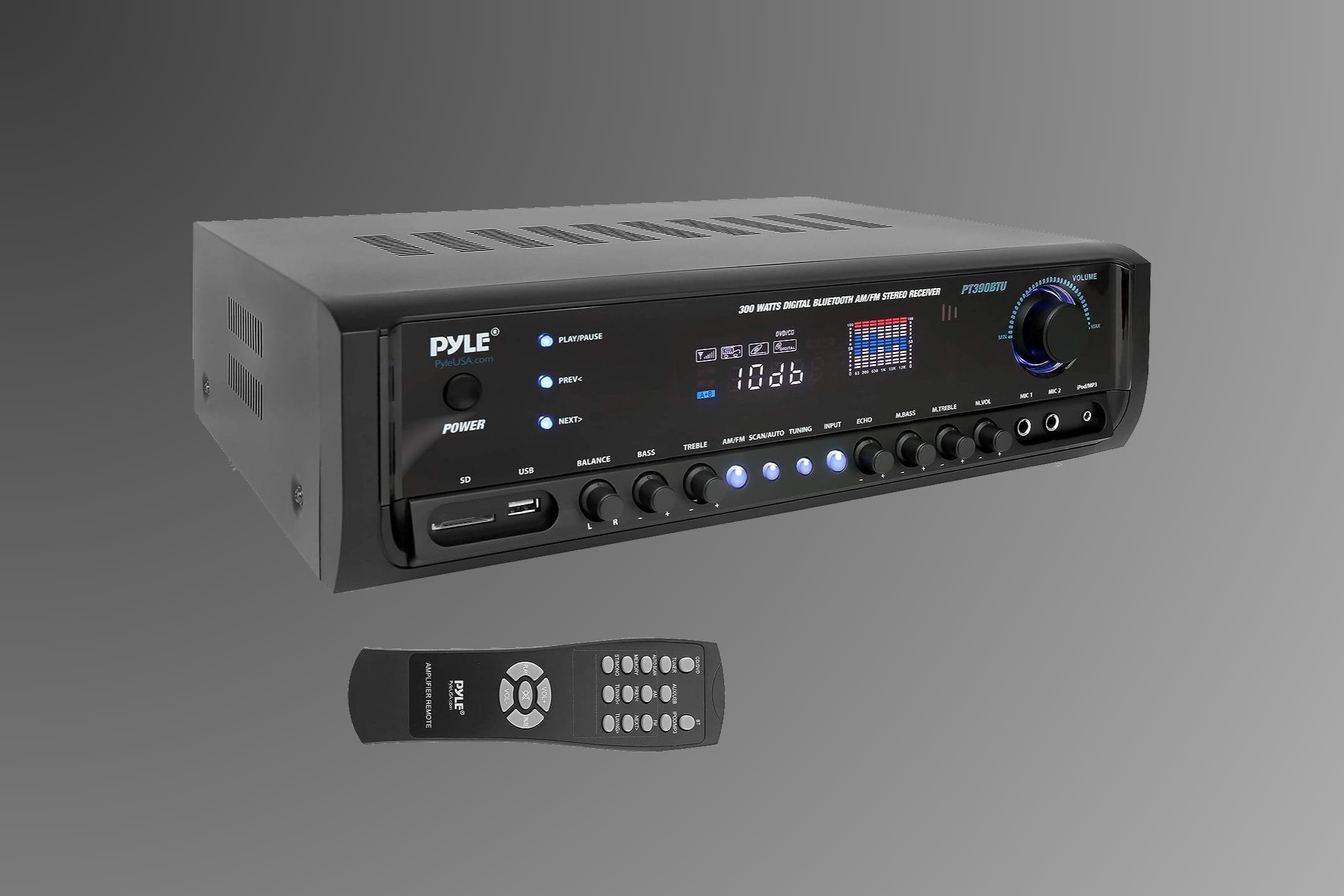
Pyle
| Pros | Cons |
|---|---|
| Bluetooth, plus USB and SD card slots | Only two RCA inputs |
| Two RCA audio inputs and outputs | |
| Front panel 3.5mm and microphone inputs |
While you may need plenty of inputs in a home theater receiver, you’re not typically hooking too many devices to a stereo receiver, especially if you mainly use Bluetooth. The Pyle PT390BTU has everything you need in a basic receiver, plus a handful of surprisingly useful features, all at a price that leaves you left with plenty to spend on speakers.
The PT390BTU is a 300-Watt model with A and B speaker outputs, letting you run two pairs of speakers. When it comes to wired inputs, you get two sets of RCA inputs on the back. Neither of these is a phono output, so if you’re looking to connect a turntable, you’ll need a third-party preamp unless the turntable has a built-in preamp. A pair of RCA outputs joins the inputs, letting you run a subwoofer or hook up a recorder.
The bulk of the PT390BTU’s connectivity has nothing to do with wires. Alongside the integrated AM/FM radio, you also get support for Bluetooth. This makes connecting a phone, tablet, or PC to play music over the receiver as easy as connecting to a set of headphones.
Everything so far has seemed fairly standard, but the PT390BTU still has a few tricks up its sleeve. The front of the receiver features a USB input and an SD card slot, both of which you can use to plug in a drive or a card of MP3 files to play directly through the receiver. The built-in remote makes skipping tracks much easier than using the front panel.
Speaking of the front panel, you’ll also find a 3.5mm input, handy for plugging in an MP3 player or phone. You’ll also find a pair of 1/4-inch microphone jacks, which let you use the receiver as a karaoke machine if you’re in the mood. That’s not a feature you’ll find on many other receivers.
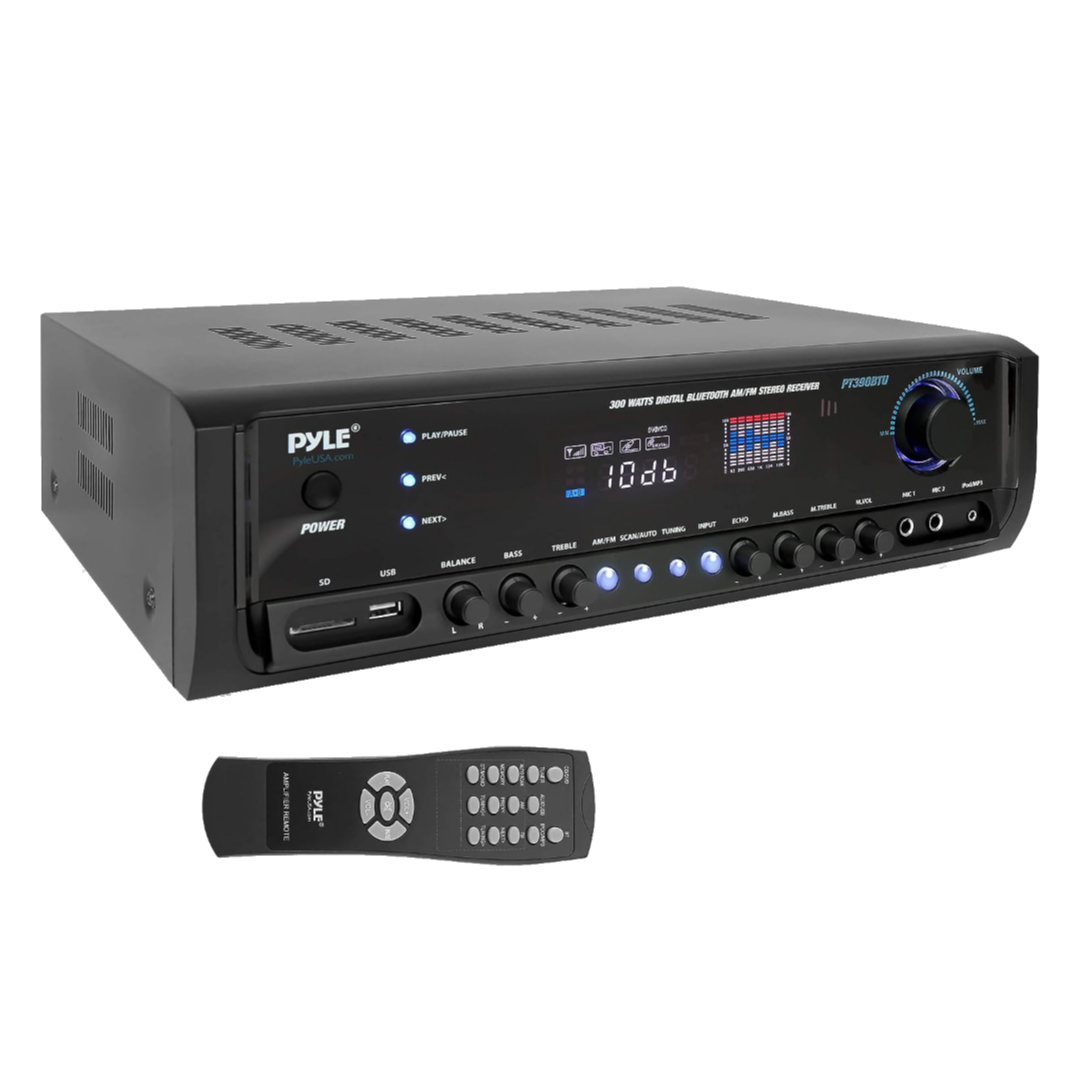

Best Budget Stereo Receiver
Pyle PT390BTU Stereo Receiver
The Pyle PT390BTU stereo receiver has plenty of power but doesn’t overload itself with inputs you probably won’t need anyway. You may not have to depend on wires anyway since you can connect via Bluetooth or play music via USB or SD card.
Best Bluetooth Receiver: Yamaha R-S202BL
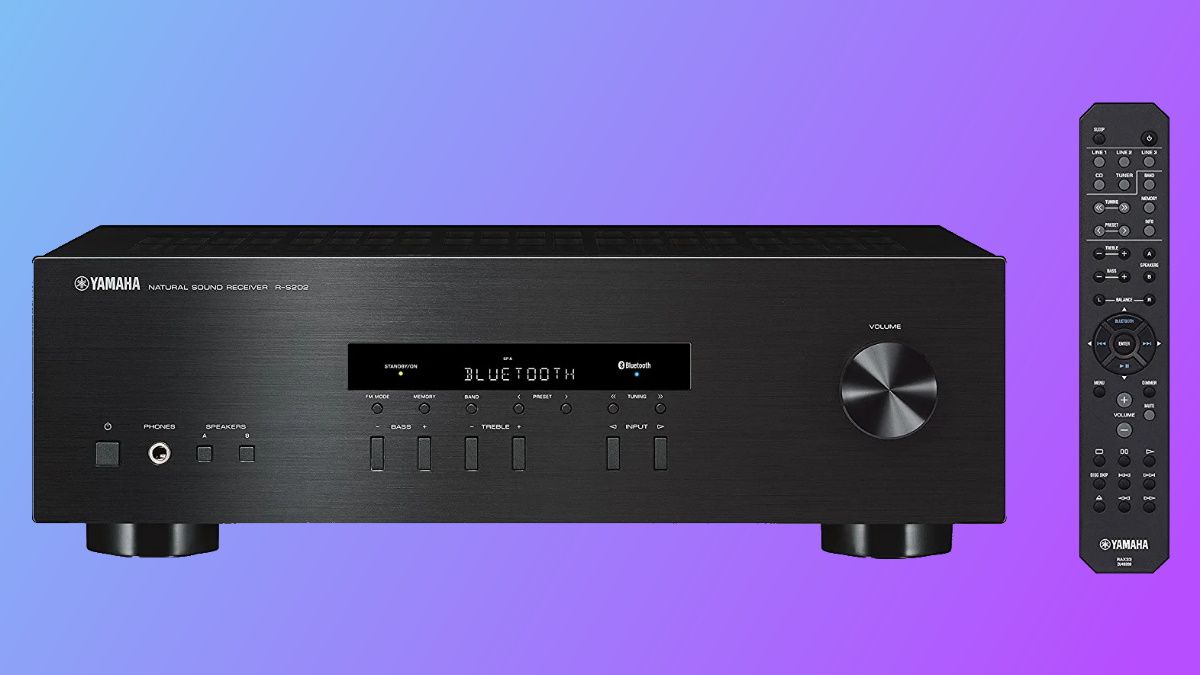
Yamaha
| Pros | Cons |
|---|---|
| Bluetooth 4.1 delivers SBC and AAC audio | No advanced codecs like LDAC or aptX HD |
| A/B wired multiroom outputs | No wired digital inputs |
| Line out for subwoofer or other connectivity | |
| A classy, minimalist look |
By their very definition, stereo receivers seem increasingly retro these days. If you’re looking for a receiver that feels more modern and has new features but comes from a company with a history in the audio world, the Yamaha R-S202BL is a perfect choice.
The R-S202BL features Bluetooth 4.1, which isn’t the newest version but still works fine for audio purposes. The receiver features the usual SBC and AAC codecs, and while it would have been nice to see more advanced codecs, these don’t often make it into stereo receivers.
Outside of Bluetooth, the R-S202BL focuses on keeping things simple and analog. You get four stereo RCA inputs, but none is a phono input. You also get a stereo output, which you can use for connecting a recording device or hooking up a powered subwoofer.
The front panel is relatively simple, letting you switch between the various wired inputs and Bluetooth. You can also switch between A and B speaker sets or turn them both on. Finally, the front panel also features a 1/4-inch headphone jack for quiet listening.
The look of the R-S202BL is simple and classy, and while it only comes in black, it should look good nearly anywhere.
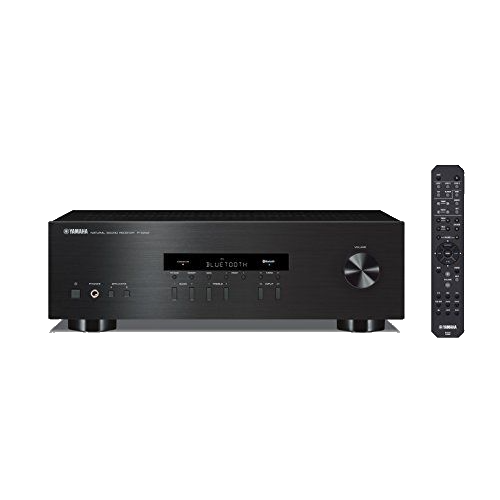

Best Bluetooth Receiver
Yamaha R-S202BL
While it offers Bluetooth 4.1, the Yamaha R-S202BL otherwise keeps things simple and mostly analog. This makes for an easy-to-use and simple to hook-up receiver that offers the sound quality Yamaha is known for.
See at Amazon See at Bestbuy See at Target
Best Vintage Stereo Receiver: Pyle Bluetooth Tube Amplifier Stereo Receiver
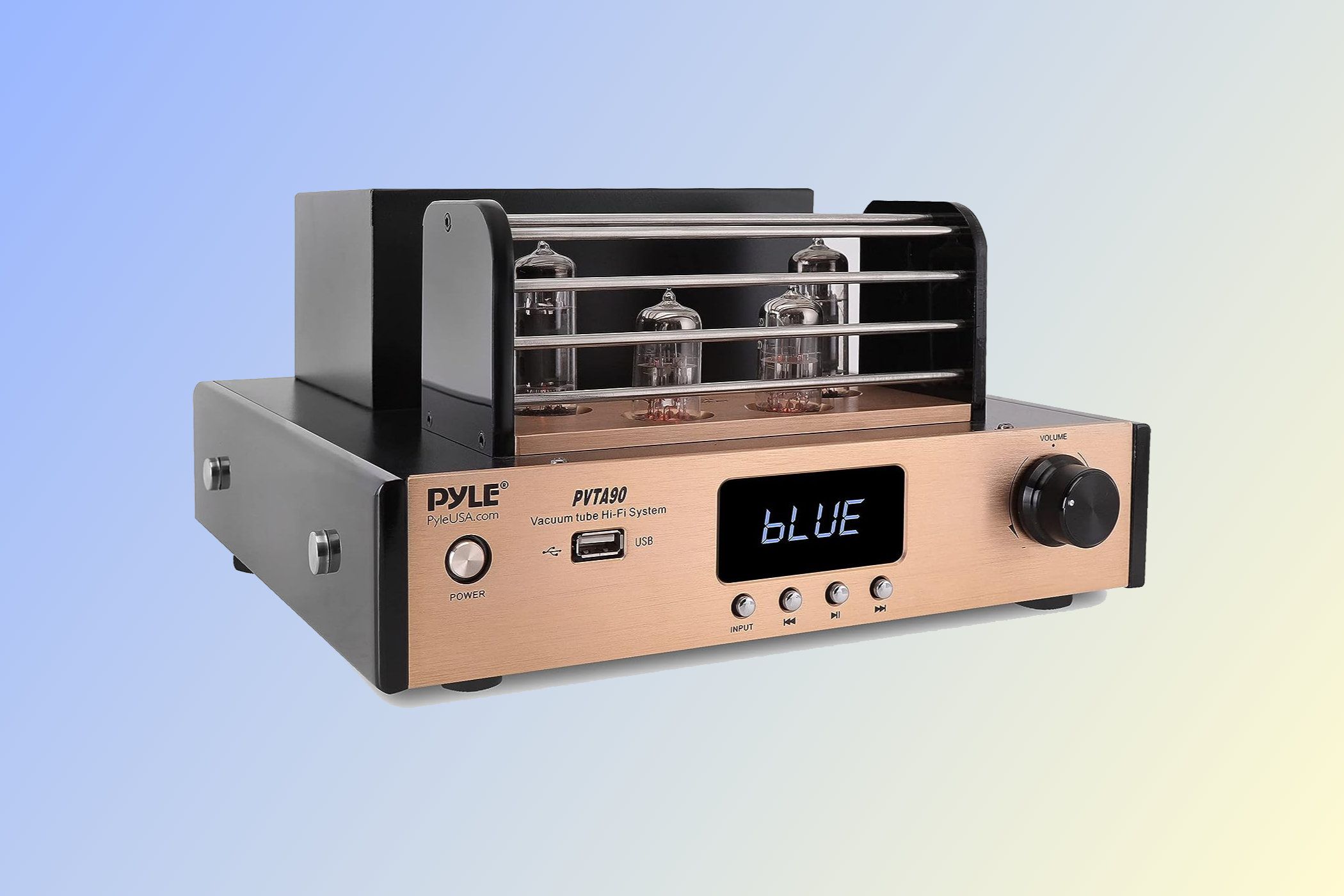
Pyle
| Pros | Cons |
|---|---|
| Full tube preamp and power amp sections | No built-in radio |
| Multiple ways to connect, wired and wireless | |
| Included remote |
It’s tough to nail down exactly what a vintage stereo receiver is, especially if you’re looking to buy one new. That said, one look at the Pyle Bluetooth Tube Amplifier Stereo Receiver , and you’ll instantly soak up the vintage look. It’s not just aesthetics either, as this receiver uses vacuum tubes, just like the classic receivers of yesteryear.
Many vacuum tube amps and receivers you see on the market still use class D amplifiers for the power section, only using tubes in the preamp section. This isn’t the case with the Pyle, which uses vacuum tubes for both the preamp and power amp. There are digital elements of the receiver, but these have nothing to do with the sound, which remains pure analog.
This receiver features a pair of speaker outputs on the back, ready to deliver up to 1000 Watts of peak power. Back here, you’ll also find a pair of RCA inputs, neither of which is phono-ready, and a subwoofer output. There is also a selector to switch between 120V and 240V power, depending on where you’re using the receiver.
The front panel holds the volume knob, an input selector, and transport controls. These let you navigate through songs when you’re connected via Bluetooth. The buttons also let you navigate through MP3s you can add via the USB port on the front.
While many vintage-style receivers only come in one color, the Pyle is available in either Black or Copper varieties. If you want to save on desk space, the company also makes a Mini version, though this is a hybrid, not a full tube model.
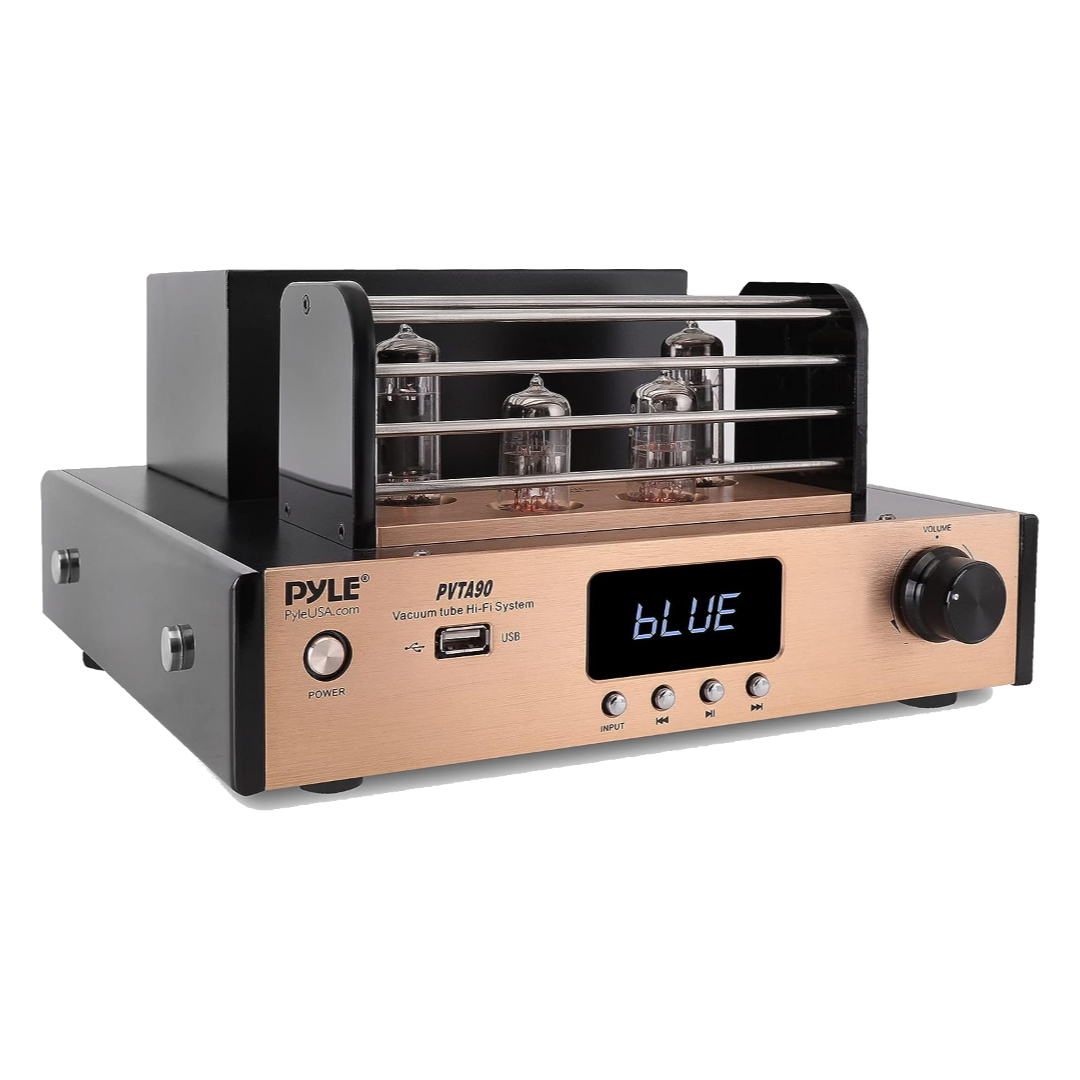

Best Vintage Stereo Receiver
Pyle PVTA90 Stereo Receiver
The Pyle PVTA90 Stereo Receiver features a fully analog vacuum tube preamp and power amp, making for smooth, powerful sound. This isn’t purely vintage, though, as it features full wired and wireless connectivity.
Best Stereo Receiver for Vinyls: Onkyo TX-8220
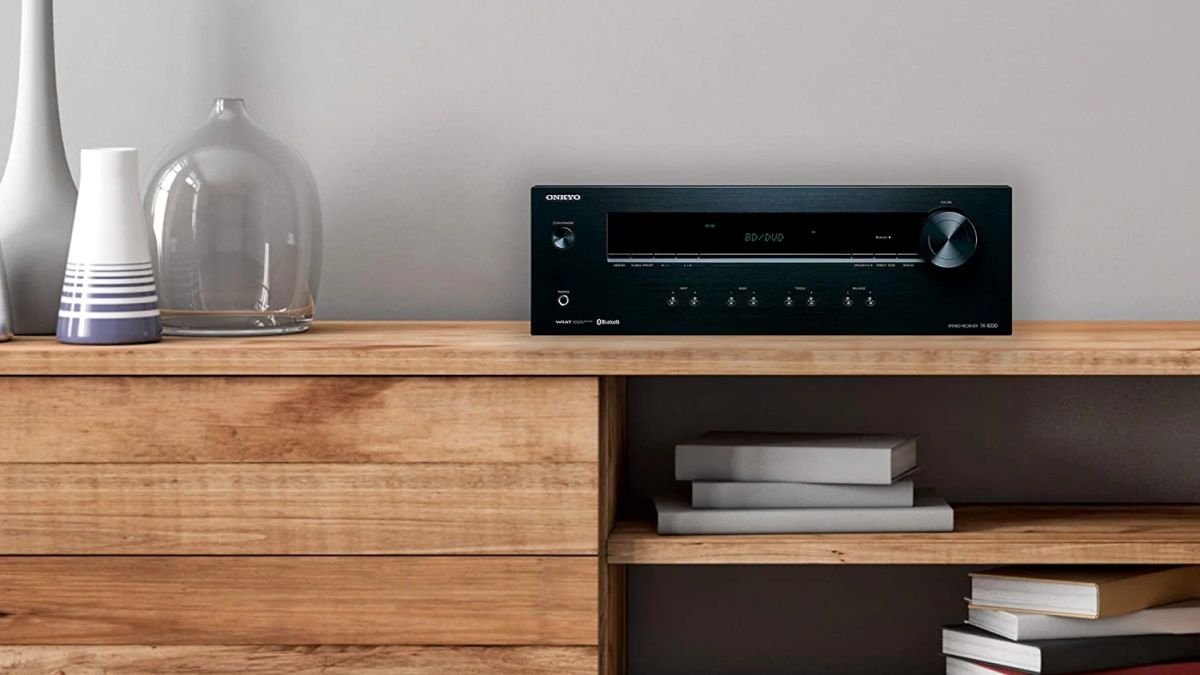
Onkyo
| Pros | Cons |
|---|---|
| Moving magnet phono stage for your turntable | Bluetooth volume can be low compared to wired connections |
| Bluetooth connectivity remembers up to eight devices | On the bigger side |
| Includes both a line out and a dedicated subwoofer out | |
| Both optical and coaxial digital inputs |
The Onkyo name has been around for years, and while the ownership may have changed hands along the way, it still means you can expect great quality. The Onkyo TX-8220 combines old and new, matching backward compatibility with modern features and aesthetics.
The TX-8220 features a total of five stereo RCA inputs, one of which is a moving magnet phono stage. These are joined by a pair of digital inputs, one optical and one coaxial. The receiver also features a line out and a separate subwoofer out.
You can also connect to the TX-8220 via Bluetooth to play music from your other devices. The receiver remembers up to eight devices, so after pairing your devices once, it’s easy to start playing back on the TX-8220 whenever you feel like it.
Like most of the receivers on this list, the TX-8220 features support for A and B speakers, switching between pairs or playing both at once. Even if you’re only listening to one set, the massive EI transformer and other carefully chosen components lend a hefty weight to the sound.
The front panel of the TX-8220 is very clean, with four prominent pairs of buttons below the main strip to control bass, treble, balance, and the input you’re playing back. Add the power button, volume control, and the 1/4-inch headphone jack, and you still have a nice-looking, uncluttered receiver.
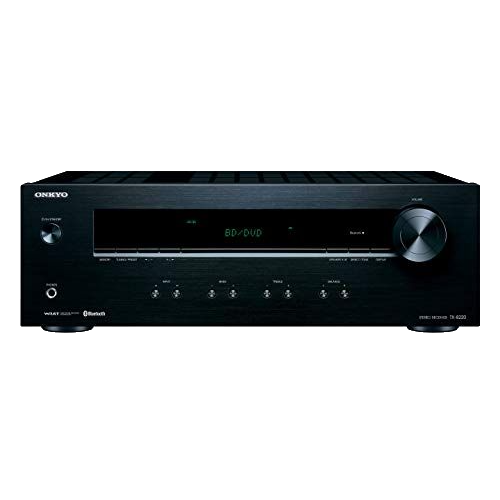

Best Stereo Receiver for Vinyls
Onkyo TX-8220
With Bluetooth, a ton of both analog and digital wired connections, and a moving magnet phono stage, the Onkyo TX-8220 has all the connectivity you could possibly need, plus it sounds great.
See at Amazon See at Crutchfield
Best Low Profile Stereo Receiver: Cambridge Audio AXA35
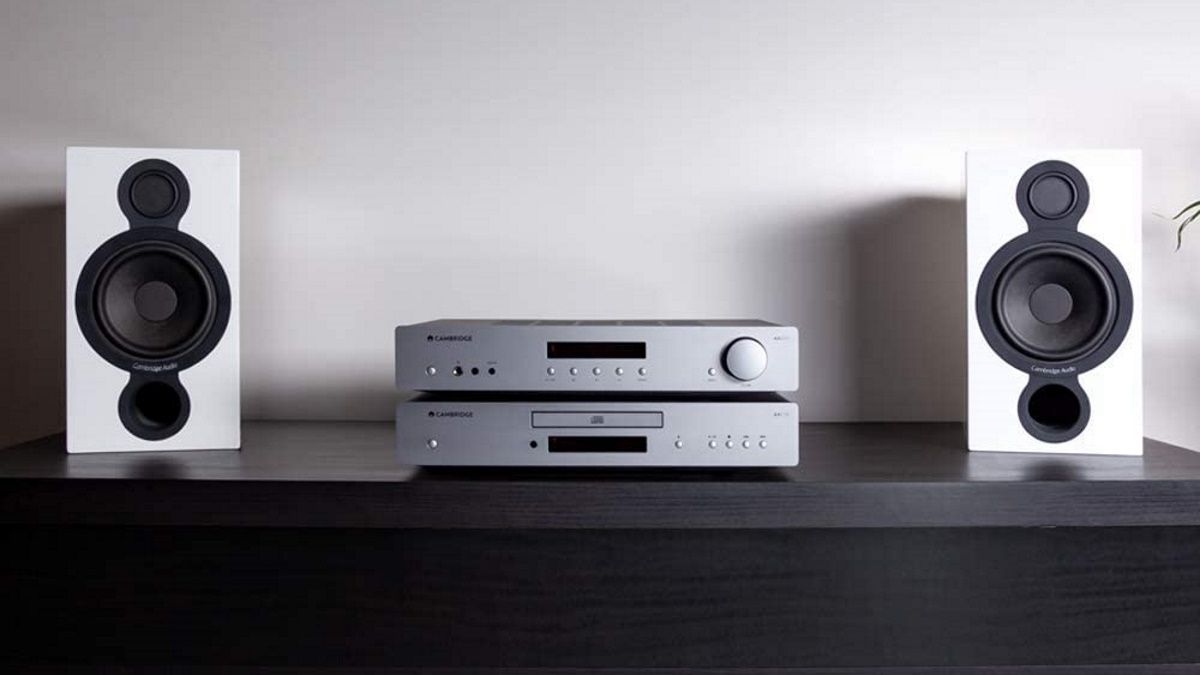
Cambridge Audio
| Pros | Cons |
|---|---|
| Great looking low-profile design | No digital audio inputs |
| Moving magnet phono stage | USB port doesn’t allow flash drives |
| Front panel auxiliary jack is great for portable players | |
| USB port lets you connect a Bluetooth receiver |
Finding a receiver to fit a cramped space is always tricky, but it’s especially tough if you’re looking for something aesthetically pleasing that also sounds great. The Cambridge Audio AXA35 sees the well-known English brand expanding its offerings a bit, and it’s perfect if you’re looking for a low-profile model.
Of course, this is technically an integrated amplifier, not a receiver, as it has no built-in radio. It’s also a little less powerful than some other receivers we’re looking at, with just 35 Watts per channel, but that is more than enough for most music listening. You may have to increase the volume slightly more than you’re used to.
The AXA35 features four analog stereo RCA inputs, one of which is a moving magnet phono stage. You also get a 1/4-inch headphone jack and a 3.5mm auxiliary input on the front of the receiver. This is especially handy for plugging in an MP3 player.
You won’t find Bluetooth on the AXA35, but it does offer options for digital audio. A USB port on the back doesn’t function the way you’d expect—you can’t plug in a USB drive loaded with MP3s, for example. Instead, you can use this port to plug in a USB Bluetooth receiver.
The front panel is almost too barebones, as you’ll need to dive into menus to adjust the balance or tone controls. That said, if you prefer a minimalist look, the AXA35 should be a nice fit.
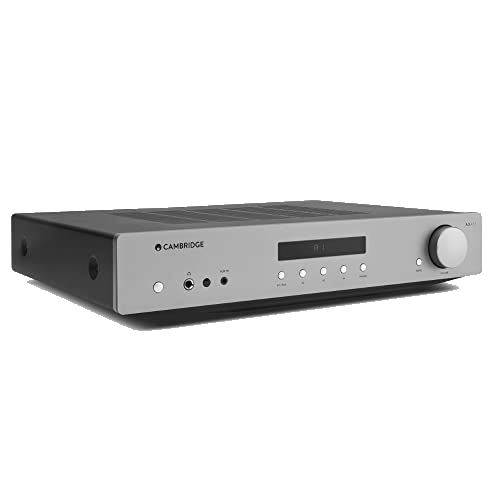

Best Low Profile Stereo Receiver
Cambridge Audio AXA35
While it’s technically an integrated amplifier, the Cambridge Audio AXA35 will fit places other receivers won’t. The wattage may be on the low side, but the AXA35 still offers plenty of audio power.
FAQ
How do I connect my TV to a stereo receiver?
Many TVs offer both analog RCA and digital audio outputs . Running a stereo RCA cable from your TV’s red and white outputs to the same inputs on your stereo is the simplest way to connect.
How do I connect my amplifier to a stereo receiver?
Plugging an amplifier into a stereo receiver could potentially damage it. If you’re plugging in a preamp, this can go into an RCA line input. As a receiver is an amplifier, plugging another amplifier into it isn’t necessary.
Can I put something on top of my stereo receiver?
You shouldn’t place anything on top of your receiver, as this can cause the receiver to overheat and could damage it. The heat buildup could also damage whatever you place on top of the receiver.
Do I need a stereo receiver for my home theater system?
No. It’s more likely that you need a 5.1-channel or higher receiver for your home theater system. That said, if you’re already using a soundbar or home theater in a box, you don’t need to add a stereo receiver.
Also read:
- [New] 2024 Approved Download Free MCB Skin Designs
- [New] Avoid Virtual Reality Queasiness 5 Useful Tips for 2024
- [New] In 2024, Loop Lovers Guide Instagram's Best for Repeat Viewers
- [Updated] Maximizing Vimeo Presence with Movies From WMM for 2024
- Affordable Creation: The Usability of the Sub-$80 AliExpress 3D Printer as Confirmed by Users
- Get the Best Bargain - Asus TUF (Gaming) Laptop with AMD Ryzen for a Shocking Memorial Day Sale: Only $658
- Solutions for Restoring Your Invisible Wi-Fi Connection
- The Fruit of Gladness | Free Book
- The Ultimate List of 20 Magic Words for Marketing for 2024
- The Ultimate Selection: Expert Picks for the Most Exceptional 55 TVs of This Year
- Top 5 Essential Computer Peripherals Every Tech Enthusiast Needs
- Top Protective Covers for the Newest Google Pixel 8 Smartphone
- Top Rated Boomboxes : The Ultimate List
- Top-Performing Processors: A Comprehensive Guide
- Top-Ranking MicroSD Cards for Optimal Performance
- Top-Rated Classic Gamepads: Ultimate Pick for PC and Raspberry Pi
- Top-Rated Desk Seating Solutions for Professionals
- Title: Explore Elite Audio Quality with Our Pick of Leading Stereo Receivers Homes
- Author: Edward
- Created at : 2025-02-14 20:50:09
- Updated at : 2025-02-20 00:07:54
- Link: https://buynow-help.techidaily.com/explore-elite-audio-quality-with-our-pick-of-leading-stereo-receivers-homes/
- License: This work is licensed under CC BY-NC-SA 4.0.